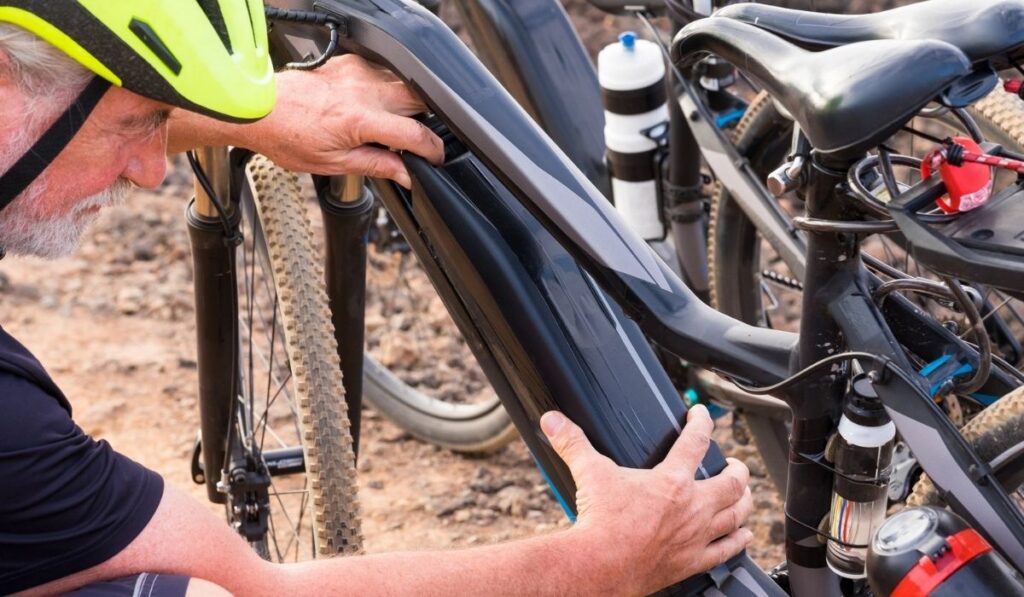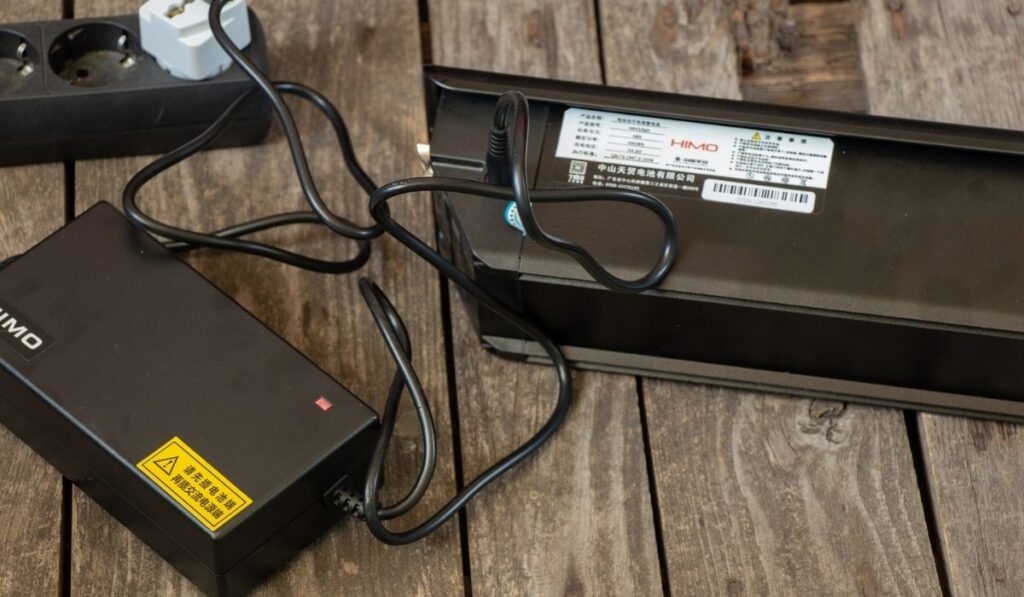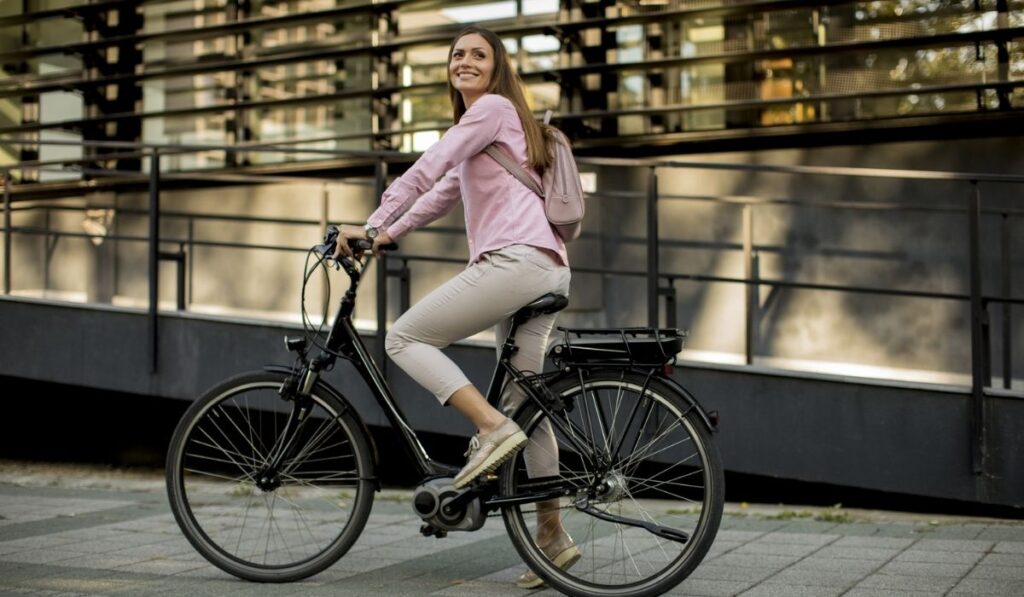Imagine your electric bicycle is low on battery in the middle of a ride. Typically, you’d have to plug it in and charge it before you can use it again. But what if there’s nowhere to stop and charge, or if you don’t have the charger? Can you still use your E-Bike when the battery is dead as if it were just a traditional bike?
Electric bikes can be ridden after the battery dies, but it’s harder than riding a traditional bicycle because E-bikes are heavier and usually have wider tires. Riding while the battery is dead won’t hurt the bike, but running the battery to 0% often will decrease its performance faster.
There are many advantages to having an electric bike, but there comes a time when you wish the battery would just last forever. Unfortunately, this isn’t possible due to weight and battery life limitations. Should your e-bike die before reaching your destination, it’s important to know the best course of action. To learn how to ride an e-bike without the battery, why it is more challenging, and more, continue reading this detailed guide.
Can You Ride An E-Bike Without the Battery?

Most electric bikes can be ridden without a battery since they have pedals and gears that can be operated by the rider to spin the tires. In the United States, most states classify e-bikes in three classifications, all of which are designated as either pedal-assist or throttle-assist.
In other words, to be classified as an electric bike, the bike needs to have pedals. The UK and Europe have even more explicit guidelines that require all electric bikes to have pedals.
Therefore, riding an electric bike without a motor is definitely possible. The electric bike has all the components- chain, drivetrain, wheels, gears, brakes, and everything else that is required to make the bike move in the traditional way. However, depending on the make and model, the electric bike may not have as many gears as a regular bike and will undoubtedly be heavier.
Is Riding an E-Bike Without a Battery Harder?
Riding an electric bike without a battery is most definitely harder than if the battery and motor were assisting you with pedaling. Additionally, an e-bike without a battery is harder to ride than a regular, non-electric bike too. There are actually a few reasons why.
Electric bikes accommodate extra components, including a battery, motor, and a larger frame and tires to support these components. These additional components add a considerable amount of weight to the bike, with many weighing in at 40 to 80 pounds.
So, manually pushing this extra weight will make it a more difficult task than a non-electric bike.
Along with their higher weight, many e-bikes have larger and thicker tires too. They’re designed this way to handle higher speeds and rough terrain more easily.
These wider, thicker tires add more traction, which means there is also more friction you will have to overcome when pedaling under only your own physical power.
If you’re used to your electric bike effortlessly churning through sand or gravel while it’s charged, consider avoiding these harsher terrains if your battery dies. Riding through sand and similar terrain is a slog without the motor assisting you.
Riding an E-Bike Without a Battery is Great Exercise
Riding an electric bike with the battery and motor assisting is a good workout on its own. After all, the electric bike isn’t doing all the work; you’re putting in a substantial amount of power too. In fact, when you stop pedaling, you’ll immediately notice a significant speed reduction.
But what if you wanted an even more intense workout while riding your electric bike? Well, we’ve got good news for you! You can increase the intensity of your workout by simply not using the battery and motor.
It’ll be like riding a regular back with extra weight and extra resistance or similar to running or walking in a weighted vest.
Will Riding an E-Bike Without the Battery Damage it?
Some electric bike riders incorrectly assume that riding an electric bike with a dead battery will damage it. However, they are mistaken. An e-bike can be used without a charged battery and will not harm the motor in any way, shape, or form.
It won’t add any friction or grind gears, the motor, or the controller. All of the components are designed to be free-spinning regardless of what is spinning the wheels– whether it’s your feet, the motor, or a combination of the two.
Don’t Run Your Battery Down to 0%

Some readers might still be wondering why you would ever ride an e-bike without the battery in the first place, while some may choose it for their own reasons.
However, most riders will be in this situation because they forgot to charge the battery or ran it down too low on an extended trip.
Although electric bike batteries are rechargeable, it’s not recommended to run the battery all the way down to zero percent. In fact, this recommendation doesn’t just apply to your electric bike’s battery, but all types of rechargeable batteries, including your phone, computer, tablet, etc.
Many electric devices, such as the iPhone, have firmware that turns the phone off before the battery is actually entirely depleted (despite your battery icon saying 1%, in actuality, the battery will have 5-6% left).
So why is it bad to run down rechargeable batteries all the way to 0%? There are a few reasons that have to do with the battery’s overall lifespan and optimization. Batteries work optimally between 20 to 100%.
When they routinely get down below 20%, the battery’s capacity (its ability to hold a charge) can decrease substantially. If you’ve ever owned a phone and noticed how the battery just doesn’t seem to last as long after a year of use, you know this problem all too well.
Additionally, the temperature can affect the charging capacity as well as how long it takes to charge. Rechargeable batteries are designed to hold a maximum charge at room temperature.
If your bike has been out in the cold winter, bring it inside for a few hours before plugging it to charge. This will help improve the charging cycle and maintain the battery’s capacity.
How to Extend Your Electric Bike Battery Charge

If you’re looking into riding an electric bike without a charged battery, you’ve probably been burned by a dead battery before. Or perhaps you’re frequently riding longer distances that are just barely within the range limit of a full charge.
In any case, determining and utilizing battery extension methods can help you avoid the dreaded dead battery. Here are the top ways to extend the length of your battery’s charge and its lifespan:
Reduce Weight
For every extra pound carried on your bike, more energy will be required to keep it moving. If you’ve ever tried carrying a box or a couch up a flight of stairs, you should understand just how much of a difference a 10 to 20 pounds can make.
As such, your electric bike will either need extra energy input from you or the battery to deal with the extra load. However, the extra energy always comes from both sources, so that means if you bring a heavy backpack along on your ride, your battery will drain faster.
An easy solution is to shed any extra weight from our bike, and that doesn’t just mean to go on a diet (although that would help too). Consider leaving heavy backpacks, extra gear, and unnecessary accessories behind to extend your e-bike’s battery life.
Ride on Smooth Surfaces
Instead of riding your electric bike on bumpy, coarse pavement, ride on smooth pavement or concrete when you have the option. Any terrain that is bumpy, coarse, or loose (like sand, gravel, and mud) will provide extra resistance to the wheel spinning. As such, more power from the battery is required to overcome the additional obstacles and resistance.
A short detour through a gravel path isn’t going to affect your battery life substantially. However, riding multiple miles through the dirt or sand when there is a perfectly smooth pavement path nearby will undoubtedly eat away your charge faster than you could change gears.
Use Eco Setting
Most electric bikes have different settings that allow the rider to switch between different power levels. For example, an electric bike may have a turbo, performance, and eco setting, where eco provides the least boost and drain from the battery, and turbo uses the most energy. Therefore, to reduce your overall battery consumption, you should ride in the eco mode for most of your ride.
An excellent guideline to follow is to use the eco mode for flat, smooth conditions, the performance mode on dirt paths or coarse roads, and the turbo mode on steep climbs and rougher terrain like deep sand.
Avoid Hills
If you’ve ever biked up a hill on a regular bike, you know exactly how much more energy it takes during the climb to the top. The extra energy needed applies to your electric bike too. If you can take a route to your destination with fewer hills, you’ll extend your e-bike’s battery range.
However, don’t go so far out of your way that you lose precious time or extend the length of the trip that it uses more battery anyway.
Check Tire Pressure
Bike tires with proper pressures provide a nice, smooth-riding feel. If your bike tires are slightly deflated, they will flatten out and have more “give.” This means more of the tire will be in contact with the road and will have more friction, thus using more energy from the battery.
A quick check with a tire gauge will provide easy insight into whether your tires need to be pumped up to optimal pressures.
Oil the Chain
Keeping the chain of your electric bike properly oiled is yet another easy maintenance task that reduces friction and can keep your electric bike running smoothly and efficiently. If your check lacks the proper amount of oil, it will grind along the drivetrain and lose precious energy.
Keeping the chain oiled will make it roll uninhibited through the drivetrain, and it will keep the bike running efficiently, optimizing the battery charge.
Minimize Turns
The longer you can ride your electric bike in a straight line, the better. Turning requires you to slow down and waste the kinetic energy your battery and motor have already created. Then, to get back up to speed, you have to use even more power. However, minimizing turns can be difficult, particularly if your route does not give you a lot of options.
Increase Your Aerodynamics
Increasing your aerodynamics is another way that you can increase your e-bike’s battery charge. Just imagine how much harder it would be to ride a bike with a parachute behind you?
It’s the same type of idea when you wear baggy clothes or sit straight up on your seat vertically. Think of how the pro riders in the Tour de France lean forward during their rides; they do this to decrease their wind resistance. If you do the same, you’ll save some of your battery’s charge.
Can Manually Pedalling an E-Bike Recharge a Dead Battery?
Unless your electric bike is designed to convert mechanical energy from pedaling, the electric bike battery can’t be recharged this way.
Being able to recharge the bike from pedaling is definitely an interesting concept that some electric bike manufacturers have executed. However, the energy used to charge the battery comes from braking and not pedaling itself.
This type of energy recovery system is known as regenerative braking. When you are pedaling, all the energy you are putting into the bike to make it move forward is lost when you brake.
But when you have a regenerative braking system, as much as 5-10% of that energy can be recovered and converted to electricity to charge the battery.
Most electric bikes do not have regenerative braking, and if your battery is completely dead, it isn’t enough juice to completely recharge the battery or even by a sustainable amount.
